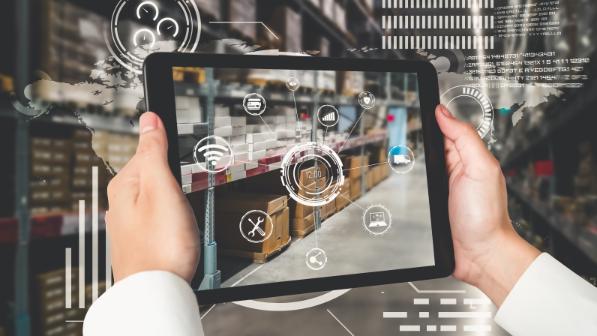Establishing an ethical supply chain is no longer optional for businesses today. Around the globe, even the smallest companies are recognizing the functional benefits of practicing and promoting social and environmental responsibility – not just internally, but also related to their sourcing, manufacturing, distribution, and logistics partners.
Why has the original concept of Corporate Social Responsibility (CSR) evolved into the Environmental, Social and Governance (ESG) initiatives that so many organizations are pursuing today? And why have these ESG principles traveled so thoroughly from a company’s headquarters to the furthest outposts of its supply chain?
The answer lies partially in the evolving nature of the supply chain itself. A once cumbersome and opaque system for obtaining materials, creating goods and moving them has been transformed by technology into a more transparent and global process – one that can be easily monitored and understood by business and consumer end-users. As supply chains become more accessible and flexible, but also more complex and geographically extended, there is a growing awareness of how each individual component of the process works, and also a growing need to make sure each is working ethically.
And that brings us to the second part of the answer. The move to ensure ethical practices throughout the supply chain is also driven by changing consumer expectations, habits, and technological capabilities. Consider the following:
What consumers want
To some extent, the calculations for business owners and managers are straightforward. To succeed and grow, companies need to understand, satisfy and engage their customers. And one critical thing to know about buyers today is that they are actively seeking to do business with companies that prioritize social and environmental responsibility. An Accenture survey, for instance, found that more than half of consumers would pay more for sustainable products that can be reused or recycled. The data is particularly clear when it comes to Millennials, with a 2015 Cone Communications survey showing that 9 out of 10 would switch brands to one that was associated with a specific social cause. And a more recent 2019 survey revealed that 72% of the U.S. consumers want the companies they buy from to reflect their values.
That’s where comprehensive ESG reporting comes into the picture. If your company can communicate to consumers, and your stakeholders, exactly how you are prioritizing environmental protection, worker rights and safety, and social causes, you can better participate in the dialogue with consumers.
What consumers know
Not only are they able to research and understand how your business manufactures and obtains its goods and materials, consumers are more than willing to share their findings with others through social media. According to the Cone survey, more than two-thirds of Millennials use social media to engage on corporate social responsibility issues. Technology has given your customers the ability to broadcast their concerns about your organization’s approach to sustainability, for instance, or the manner in which your suppliers conduct their own business. It has also given consumers a platform to promote and recognize businesses that are doing good work, turning them into powerful ambassadors for brands whose social and environmental practices they support.
What businesses have learned
One of the top issues for consumers and businesses today is environmental sustainability, as discussed in my article of Delivered. Sustainability is a central mission for DHL, where we have set a zero emissions by 2050 goal. A recent Forbes article drives this environmental message home, discussing new research about empowered consumers: “As expert researchers and device users, empowered shoppers scout information from company values to manufacturing and supply chain practices in search of sustainable options: 68% of highly empowered consumers plan to step up their efforts to identify brands that reduce environmental impact, 61% seek out energy-efficient labels when making purchases and 47% regularly buy organic products.”
But business leaders recognize that an ethical supply chain extends well beyond its adherence to principles of sustainability. It must also take into consideration the rights of workers – the very people who make the supply chain function – including issues such as labor conditions and workplace discrimination. And in the process of pursuing ESG practices, business leaders have learned something else: an open, transparent supply chain that works to reduce environmental impacts and ensure positive labor conditions operates more efficiently, delivers better products, and improves outcomes for everyone.

How is the ethical supply chain more effective? It allows for greater quality control, as improved oversight allows businesses to better monitor production practices. It reduces costs, as managers gain a greater ability to regulate how and when their goods are produced and delivered. It improves reliability throughout the supply chain, since enhanced compliance with environmental and labor laws and regulations means costly delays, and even more costly legal penalties, are avoided. And finally, it builds trust between companies and their customers.
Why go looking for the latest logistics stories and insights when you can have them delivered right to you?
What your business can do
Achieving an ethical supply chain involves setting goals, embracing technology, and pursuing training and education for your employees. Establishing a green supply chain, for instance, means that your organization must commit to science-based targets, along with a process to ensure they are met. Science based targets are validated by an independent organization and support the goal of keeping global warming below 2 degrees Celsius. While your mission may be to reduce the carbon footprint of your supply chain to zero, getting there takes well-planned steps, and a commitment to finding the right sourcing, manufacturing and logistics partners.
When it comes to obtaining materials and monitoring your supply chain for compliance, digital tools are essential. By digitalizing your supply chain, you also prevent the falsification of manual, paper-based supply chain documents, thereby reducing the amount of counterfeit parts entering the supply equation.
Your employees represent the front line of your efforts to ensure that your social and environmental supply chain goals are realized. Ensuring that they understand your company’s overall commitment to ethical practices is key, and it’s also critical to give them the ability to participate in the mission and speak up when they see something wrong. Your employee training and professional development programs should include a comprehensive component on your company’s social and sustainability goals.
Published: June 2021
Images: AdobeStock







